Your roof is 10 years old and you are in a neighborhood where roofs are starting to be replaced. You start to worry that maybe you should have your roof replaced too. After all, “everyone is doing it.”
Here are a few guidelines that I am sure will help you:

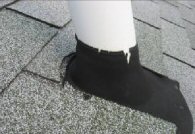
Valleys Go First.
Most roofs last a minimum of 17 to 20 years depending on the pitch of the roof and how many valleys and obstacles are on the roof. The steeper the pitch the longer the roof will last. If you can easily walk on your roof, then that roof should last the minimums stated above. Valleys are usually the first area to go bad as that is where water accumulates in a trough before it leaves the roof. Some asphalt shingle roofs have lasted up to 30 years.
Plumbing Stacks.
Roofs put on within the last 10 years experience deterioration with the plumbing stack boot made of neoprene. It has a tendency to dry out and crack allowing water to run down the pipe into your home through the walls. Sometimes the only evidence of a leak can be found in the basement or wherever the first bend in the pipe is located. Installing a new boot will last the remaining life of the roof. If you are in need of a new roof, use a lead plumbing stack cover which will outlast any roof system.
Granule Loss.
When a roof reaches the end of its life the granules on the shingles come off more readily as the asphalt that holds them in place begins to deteriorate. Watch for granules in your gutters washing out onto your lawn, or the roof turns dark as the asphalt is exposed. Shingles may begin to curl when asphalt breaks down allowing water to penetrate the core of the shingle.
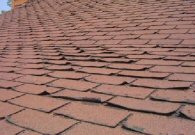
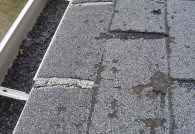
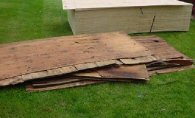
Poor Ventilation:
Another major factor that determines how long your roof will last is ventilation. If there is inadequate ventilation, problems like condensation in the winter and excessive heat in the summer will shorten the life of the roof system and cause major damage to the wood deck.Attics need to ‘breathe’. This picture shows what happens to the plywood when condensation builds up due to heat loss and there is inadequate ventilation. This adds to the expense of roof replacement. To solve the problem, make sure there is at least R-30 insulation in the attic, and soffit vents and attic vents in the upper part of the roof. Here are 3 different types of roof vents available:
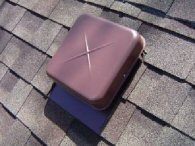
Mushroom Vent
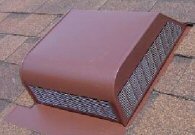
Bird-Resistant Vent
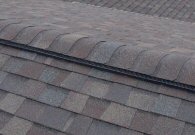
Ridge Vent
Exhaust Vents:
Most homes have at least one type of exhaust fan that exits into the attic. The most popular is the bathroom fan, but others include kitchen exhaust and dryer vents. If the fan exits through the attic it is important that it is also vented to the outside of the roof. If not this hot moist air will cause severe condensation in the attic and even mold growth. Here is an example of what a fan looks like in the attic unvented and then vented to the outside:
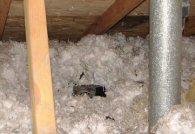

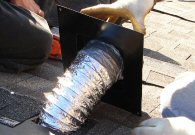
Storm and Animal Damage:
Storms may cause the roof to be replaced before the normal life of the roof is reached. High winds can blow shingles completely off the roof or hail storms can damage the toughest of shingles. Hail loosens the granules on the shingles creating dark spots as seen on these shingles. The result is a shortened life span of the shingle. The loss of granules will allow the moisture to penetrate the core of the shingle accelerating the decomposition of the shingle.Animal damage, though limited to a specific area, is an indication that the roofing material or wood substructure has deteriorated to the point that animals can more easily remove the shingles, siding, or roof deck to get to the attic for shelter. This may require only a repair, but it is a good time to inspect the remainder of the roof to determine the overall condition of the roof.
Masonry and Counterflashings:
The breakdown of chimneys and other masonry walls are an indication that roof replacement is near. If water is coming in along the chimney wall or masonry wall it is either because the counterflashing is failing or the masonry itself is absorbing water.This adds to the expense of roof replacement. To solve the problem, make sure there is at least R-30 insulation in the attic, and soffit vents and attic vents in the upper part of the roof. Here are 3 different types of roof vents available:















